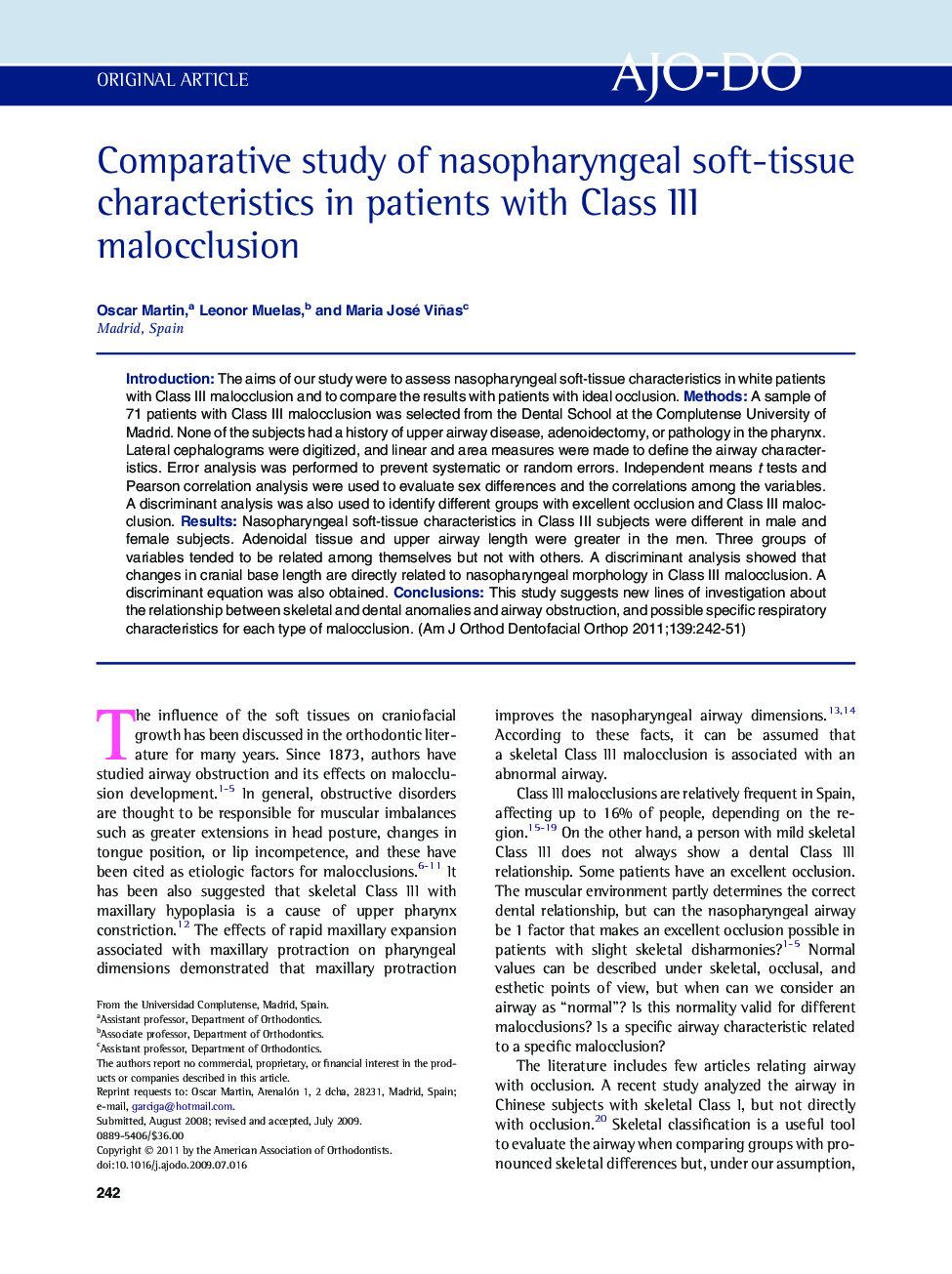| Article ID | Journal | Published Year | Pages | File Type |
|---|---|---|---|---|
| 3117808 | American Journal of Orthodontics and Dentofacial Orthopedics | 2011 | 10 Pages |
IntroductionThe aims of our study were to assess nasopharyngeal soft-tissue characteristics in white patients with Class III malocclusion and to compare the results with patients with ideal occlusion.MethodsA sample of 71 patients with Class III malocclusion was selected from the Dental School at the Complutense University of Madrid. None of the subjects had a history of upper airway disease, adenoidectomy, or pathology in the pharynx. Lateral cephalograms were digitized, and linear and area measures were made to define the airway characteristics. Error analysis was performed to prevent systematic or random errors. Independent means t tests and Pearson correlation analysis were used to evaluate sex differences and the correlations among the variables. A discriminant analysis was also used to identify different groups with excellent occlusion and Class III malocclusion.ResultsNasopharyngeal soft-tissue characteristics in Class III subjects were different in male and female subjects. Adenoidal tissue and upper airway length were greater in the men. Three groups of variables tended to be related among themselves but not with others. A discriminant analysis showed that changes in cranial base length are directly related to nasopharyngeal morphology in Class III malocclusion. A discriminant equation was also obtained.ConclusionsThis study suggests new lines of investigation about the relationship between skeletal and dental anomalies and airway obstruction, and possible specific respiratory characteristics for each type of malocclusion.
